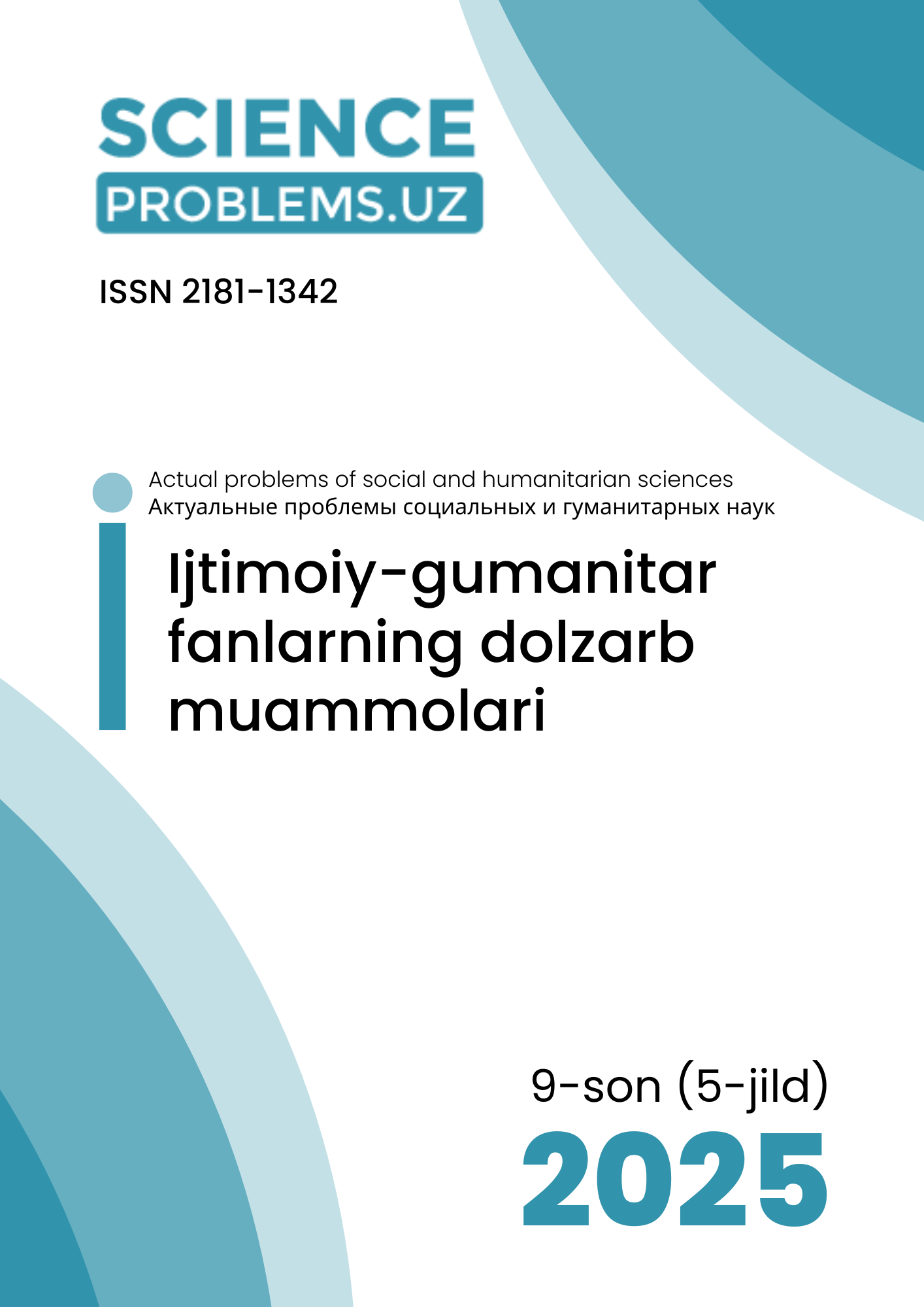BASIC CONCEPTS AND PRINCIPLES OF THE ANTHROPOCENTRIC PARADIGM
DOI:
https://doi.org/10.47390/SPR1342V5I9Y2025N13Keywords:
anthropocentrism, paradigm, cognitive linguistics, linguoculturology, Sapir–Whorf hypothesis, Humboldt, paremiology, cultureAbstract
The article explores the formation and development of the anthropocentric paradigm in modern linguistics, emphasizing its role as a new stage following comparative-historical and structural-functional approaches. It examines the philosophical foundations of anthropocentrism, the influence of Humboldt, Sapir–Whorf hypothesis, and cognitive linguistics. Special attention is given to the relationship between language, human cognition, and culture, with paremiology serving as a vivid example of how proverbs embody cultural values and collective mentality. The study concludes that the anthropocentric paradigm highlights the inseparability of language from human experience, making cognitive linguistics and linguoculturology its key branches.
References
1. Artem’eva, E. Yu. (2003). Lingvokul’turnaia sostavliaiushchaia sovremennogo politicheskogo protsessa (spetsifika angloiazychnykh gosudarstv) [The linguocultural component of the modern political process (specifics of English-speaking countries)] (Doctoral dissertation abstract). Nizhnii Novgorod.
2. Adilova, G. (2022). Metaphorization of linguocultural concepts. PNR Journal of Language and Education, 6(2), 45–59. Retrieved from https://www.pnrjournal.com/metaphorization-linguocultural-concepts
3. Boduen de Kurtene, I. A. (1963). Izbrannye trudy po obshchemu iazykoznaniiu [Selected works on general linguistics] (Vol. 2). Moscow.
4. Djumambetova, G. K., & Shakurova, F. (2023). Comparative analysis of Karakalpak and English proverbs. Journal of Academic Leadership, 14(2), 34–48. Retrieved from
5. Djumambetova, G. K., Khabibullaeva, N., & Jumayeva, S. (2022). Differences and similarities of proverbs in English and Karakalpak languages. Central Asian Journal of Language Studies, 7(4), 15–26.
6. Gaidenko, P. P. (2005). Antropotsentrizm [Anthropocentrism]. In Bol’shaia rossiiskaia entsiklopediia (Vol. 2, pp. 91–92). Moscow: Bol’shaia rossiiskaia entsiklopediia.
7. Gumbol’dt, V. fon. (1985). O razlichii stroeniia chelovecheskikh iazykov i ego vliianii na dukhovnoe razvitie chelovecheskogo roda [On the diversity of human language structure and its influence on the spiritual development of humankind]. Moscow.
8. Hymes, D. H. (1963). Objectives and concepts of linguistic anthropology. In F. L. Whitney (Ed.), The teaching of anthropology (pp. 277–300). Berkeley: University of California Press.
9. Kun, T. (1975). Struktura nauchnykh revoliutsii [The structure of scientific revolutions]. Moscow: Progress.
10. Teliia, V. N. (1996). Rol’ obraznykh sredstv iazyka v kul’turno-natsional’noi okraske miroponimaniia [The role of figurative means of language in the cultural-national coloring of worldview]. In Etnopsikholingvisticheskie aspekty prepodavaniia inostrannykh iazykov (pp. 82–89). Moscow.
11. Vezhbitskaia, A. (2001). Ponimanie kul’tur cherez posredstvo kliuchevykh slov [Understanding cultures through key words]. Moscow: Iazyki russkoi kul’tury.
12. Lucy, J. A. (1992). Language diversity and thought: A reformulation of the linguistic relativity hypothesis. Cambridge: Cambridge University Press.
13. Maslova, V. A. (2001). Lingvokul’turologiia [Linguoculturology]. Moscow: Akademiia.
14. Stepanov, Yu. S. (2001). Konstanty: Slovar’ russkoi kul’tury [Constants: Dictionary of Russian culture]. Moscow: Akademiia.








